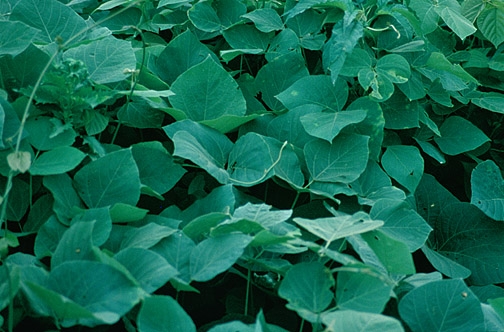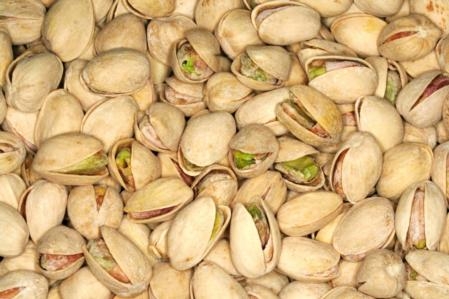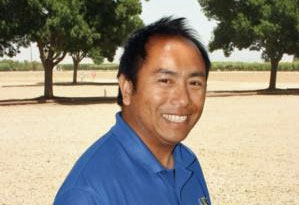From the UC Blogosphere...
Protecting the Pollinators
It's good to see so many publications focusing on the pollinator crisis--because that's exactly what it is, a...
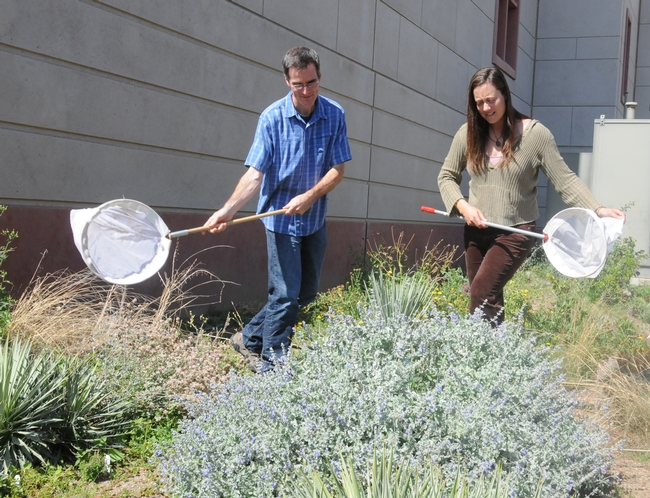
Assistant professor Neal Williams and Kimiora Ward, research associate from the Williams lab, collect bees. (Photo by Kathy Keatley Garvey)
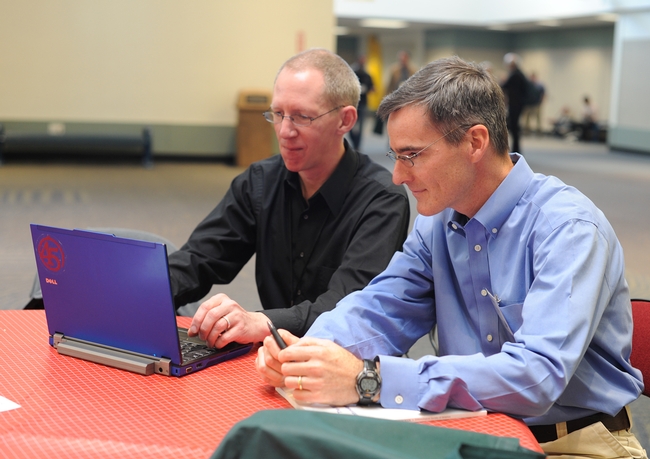
Neal Williams (right) and colleague Rufus Isaacs confer at the Entomological Society of America meeting Wednesday, Nov. 16 in Reno. (Photo by Kathy Keatley Garvey)
UC farm advisor outlines problems posed by invasive species
Faber said invasive species are being introduced at a rapid rate around the world, and are primarily spread by humans.
He differentiated between non-native plants that are beneficial, such as avocados and citrus, and invasive plants that have been accidentally introduced into an ecosystem where they run rampant.
"An invasive species is something out of place and out of control," he said.
Fresno State report confirms state’s farmers apply water efficiently
Fresno State press release
Claims that California farmers are wasteful and inefficient in managing their water supplies are inaccurate, according to a new report released by Fresno State's Center for Irrigation Technology.
The study is the culmination of a yearlong effort by irrigation experts to update the 1982 University of California Cooperative Extension report “Agricultural Water Conservation in California with Emphasis on the San Joaquin Valley” by David C. Davenport and Robert M. Hagan.
The new study concludes that the 1982 report correctly framed the potential for agricultural water-use efficiency, and many of its findings are still relevant 30 years later.
Things to be Thankful for--Bugs
Thanksgiving will come early to the Bohart Museum of Entomology at UC Davis.An open house, appropriately themed "Thankful...
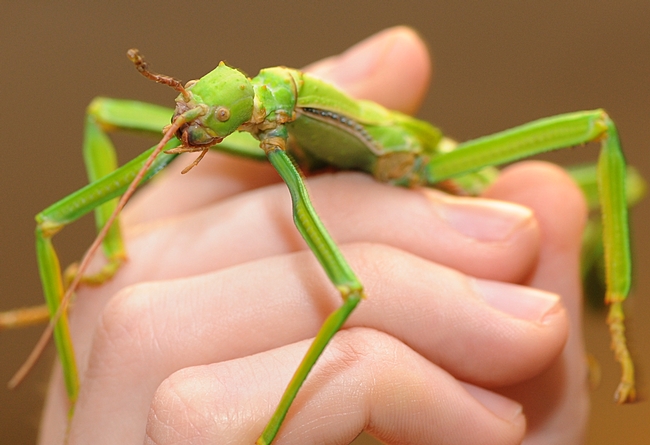
Visitors to the Bohart Museum can hold a walking stick. (Photo by Kathy Keatley Garvey)
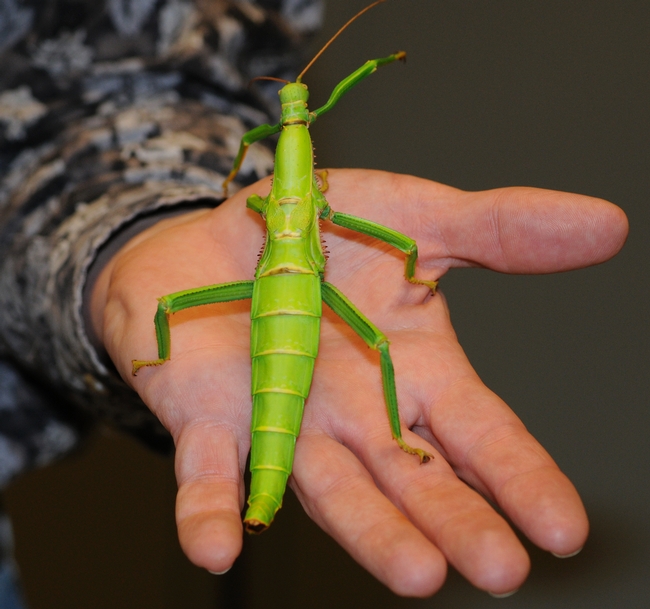
Bug in the hand is worth two in the bush? A walking stick at the Bohart Museum of Entomology. (Photo by Kathy Keatley Garvey)
California nut harvest winding down
- Almond growers expect to meet an early estimate of 1.95 billion pounds statewide, which would be a record
- Pistachio growers in the San Joaquin Valley are enjoying their second-largest crop ever after last year's record yield
- Walnut growers expect this year's yield to be 485,000 tons, slightly lower than last year's 503,000 tons
"The rumors I've heard is that guys are still complaining about the quality" of walnuts, said Rick Buchner, a University of California Cooperative Extension farm advisor in Red Bluff. "We're getting a lot of black husks on them, so there's a suggestion that we may have some husk breakdown and husk fly problems. It's probably too soon to tell yet."
UC ag assistant's friendship is the secret to farmer's success
The Los Angeles Times ran a profile today of Fresno County farmer Pang Chang, an immigrant from Laos who grows mangoes, papayas, 20 varieties of guava and jujubes. The article said the secret to Chang's incongruous crops is his friendship with UC Cooperative Extension Hmong agricultural assistant Michael Yang.
Yang told reporter Diana Marcum he grew up helping his family raise vegetables — and hated it. But as an adult he circled back, studying agriculture and landing a job with the University of California's Cooperative Extension, a program that uses scientific research to solve community needs.
Yolo, Solano counties look at boosting ag industry
Capital Public Radio
UC is a sponsor of the Solano and Yolo Counties Joint Economic Summit, 9 a.m. to 3:30 p.m. Wednesday, Nov. 16, at the Buehler Alumni and Visitors Center at UC Davis. Yolo and Solano counties want to develop a food chain cluster network to connect growers with local packing and processing facilities. In addition to UC Davis, the summit is sponsored by Solano County, Yolo County, Solano Economic Development Corporation and First Northern Bank.
Yolo County supervisor Don Saylor said local farmers are shipping about 98 percent of their agricultural products out of the area for processing and then bringing it back for purchase in local outlets. Saylor says another challenge is the ability to quickly ship farm products. He says government money for roads is typically based on population. So rural areas often get left out when it comes to new road construction.



